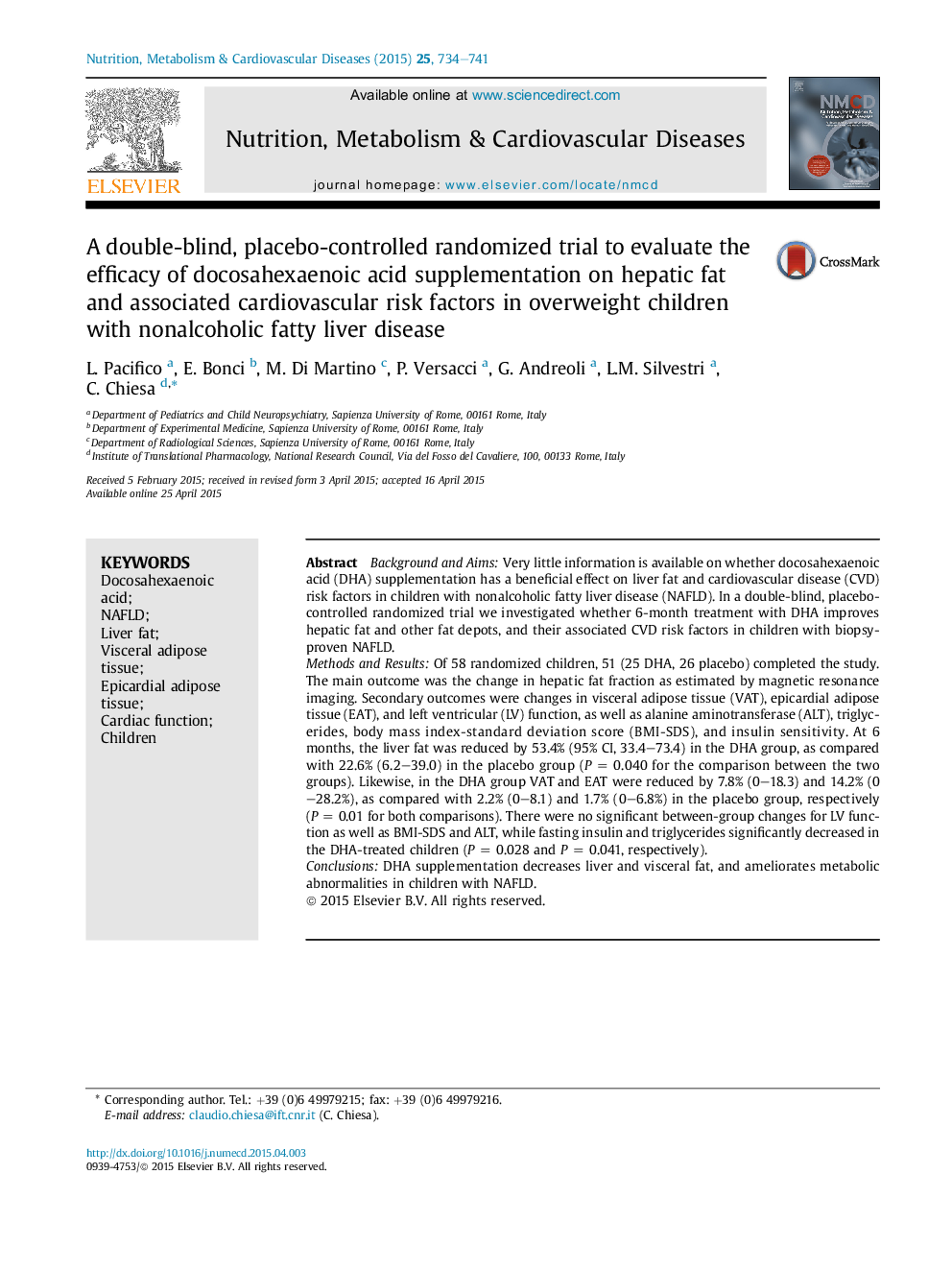| کد مقاله | کد نشریه | سال انتشار | مقاله انگلیسی | نسخه تمام متن |
|---|---|---|---|---|
| 3001828 | 1180679 | 2015 | 8 صفحه PDF | دانلود رایگان |
• Docosahexaenoic acid (DHA) supplementation decreases liver fat in children with nonalcoholic fatty liver disease (NAFLD).
• DHA treatment decreases other fat depots including abdominal visceral and epicardial in children with NAFLD.
• DHA supplementation ameliorates metabolic abnormalities in children with NAFLD.
Background and AimsVery little information is available on whether docosahexaenoic acid (DHA) supplementation has a beneficial effect on liver fat and cardiovascular disease (CVD) risk factors in children with nonalcoholic fatty liver disease (NAFLD). In a double-blind, placebo-controlled randomized trial we investigated whether 6-month treatment with DHA improves hepatic fat and other fat depots, and their associated CVD risk factors in children with biopsy-proven NAFLD.Methods and ResultsOf 58 randomized children, 51 (25 DHA, 26 placebo) completed the study. The main outcome was the change in hepatic fat fraction as estimated by magnetic resonance imaging. Secondary outcomes were changes in visceral adipose tissue (VAT), epicardial adipose tissue (EAT), and left ventricular (LV) function, as well as alanine aminotransferase (ALT), triglycerides, body mass index-standard deviation score (BMI-SDS), and insulin sensitivity. At 6 months, the liver fat was reduced by 53.4% (95% CI, 33.4–73.4) in the DHA group, as compared with 22.6% (6.2–39.0) in the placebo group (P = 0.040 for the comparison between the two groups). Likewise, in the DHA group VAT and EAT were reduced by 7.8% (0–18.3) and 14.2% (0–28.2%), as compared with 2.2% (0–8.1) and 1.7% (0–6.8%) in the placebo group, respectively (P = 0.01 for both comparisons). There were no significant between-group changes for LV function as well as BMI-SDS and ALT, while fasting insulin and triglycerides significantly decreased in the DHA-treated children (P = 0.028 and P = 0.041, respectively).ConclusionsDHA supplementation decreases liver and visceral fat, and ameliorates metabolic abnormalities in children with NAFLD.
Journal: Nutrition, Metabolism and Cardiovascular Diseases - Volume 25, Issue 8, August 2015, Pages 734–741
